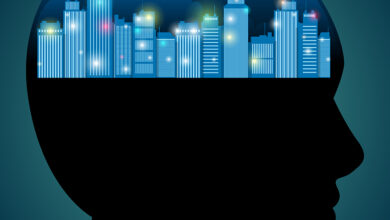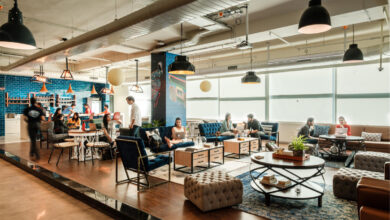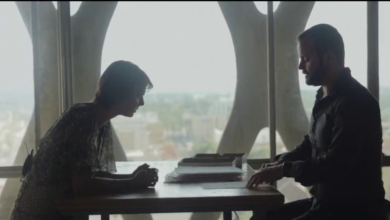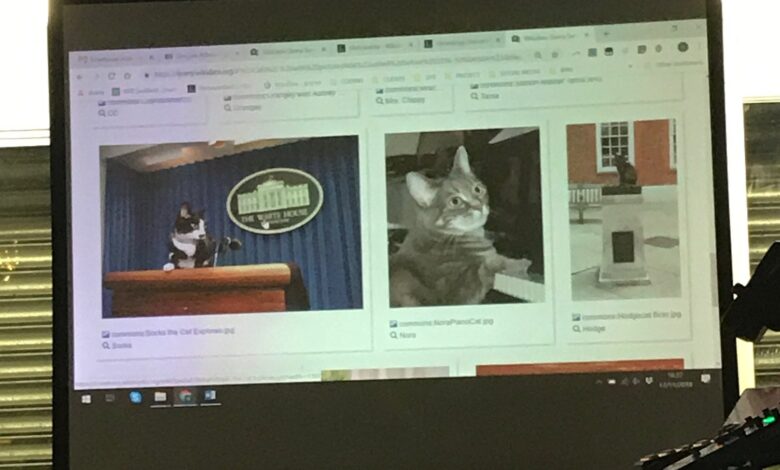
Cybersalon Soundscapes – from London to Vienna
By Stefan Lutschinger and Eva Pascoe
It is often enough to hear a few notes of much loved song for us to immediately be transported to the time when we heard it first. Memories of our favourite melodies stays with us for ever. But what about the sounds of our cities? Are they as distinct as love songs and do we love them as much as our songs? I became aware of how unique is the sound of London when I travelled to Berlin and Vienna last summer. Each of those cities sounds completely different, sharing the car and train noise, but otherwise revealing a very different aural ingredients. So what is the sound of Europe?
On Saturday Nov 17th, Cybersalon embarked on a new series of events investigating the soundscapes of our European ecosystem. We hosted an evening of exploring the sounds of London and Vienna, with a group of visiting sound artists.
The series kicked off with digital sound performances from the Transient Hole series, a curatorial project by Alexander Felch. Transient Hole looks at instationarity as an artistic concept and a scientific particularity in the context of a speculative non-retinal media artwork. We invited three Vienna-based sound artists in cooperation with the Austrian Cultural Forum London, and asked them together with Cybersalon’s Simon Sarginson – to create their own interpretations of the transience of a moving void.
Paul Gründorfer (Vienna) uses process-related setups to explore sonic worlds and to realise site specific interventions for real time audio systems that act autonomous or in reference to a particular spatial constellation. For Cybersalon, Paul created a network of electronic circuits that responded to the position of the audience and various sensors. In this piece, voice and articulation are generated through loops in feedback networks, which function as the conceptual framework for his experimentation with sound and transmission of information.
Karl Salzmann is a sound artist and visual artist, curator and researcher who develops and presents works that study the materiality of sound and its social, cultural and metaphorical levels of meaning. His artistic activities mainly concern the interaction between sound and visual arts. For his performance at Cybersalon, Karl inflated and finally burst a huge black balloon with background noise, resembling the instationarity of a transient hole.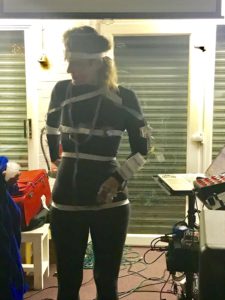
Lena Wicke Aengenheyster presented part III of her performance serial MONSTERFRAU: The voices’ bodiesat Cybersalon. MONSTERFRAU triggers, mixes and morphs dance music rhythms, samples and sounds with her movement. Lena migrates from the unknown beyond to the here and now, manifesting the difference of voices in noisy Electro music – a genre particularly associated with sounds of Vienna. Her work plays with thoughts on values and timidity woven into the matter of migration. Showing inter-mingling of London and Euro sounds, Lena’s work picks up on the Body Data Space.
Simon Sarginson, Dutch but London-based digital artist played a live DJ set with Hydra, a tool for livecoded networked visuals. Inspired by analogue modular synthesizers, it is an exploration into using streaming over the web for routing video sources and outputs in real time. Hydra uses multiple framebuffers to allow dynamically mixing, compositing, and collaborating between connected browser-visual-streams, thereby creating the perception of being “here” and “not-here” at one and the same time.
Simon also draws on his experiences with dance-driven real time visual performance based on Cybersalon’s previous collaboration with Body Data Space dancer Leanne Hammacotte , titled Theia’s Aura.

His work shows influences from London’s pioneer of digital art William Latham and his collaborations with the 90’s rave party group The Shamen, with his iconic visuals for the soundscapes that became part of London sound. Simon’s work is also drawing on sound and algorithm-generated visuals that were first explored at Cybernetic Serendipity Exhibitionin 1968. The show, held in ICA in London was the first to bring to live the mysterious then art of computers sounds and graphic. It took only a few years more when the sound of analogue computer printers filled every office in the City of London.
Cybersalon’s pioneering sonic contribution to London started back in mid noughties with Cybersonica festivals, curated by Lewis Sykes (now completing his PhD at Manchester University). Cybersonica produced live computer art DJ performances accompanied by animated sequences of dancing geishas band, where variables were manipulated to delivery enchanting machine-generated shows. Cybersonica contributed at Kinetica Festivalsin Bakers Street (Westminster Uni) in 2007 and influenced much of later London Club soundscape shows.
The bottom line is that sound samples are made to play with so for those who want to explore their own sounds of London or Vienna, or for that matter any other city, Cybesralon invited Wikidata guru Navino Evans to show a simple way to create London sound timeline. Wikidata is used to deposit files, both text, photos and sound, and can be used to extract your own curation of the specific location soundscape. Navino has also a new interface that can source from Wikidata but product Timelines using Histropedia. The next step – raid BBC audio archive and liberate it for all so we can all dive into past soundscapes of London and tell new stories with the ingredients that we all paid for as BBC Licence Payers.
Sign up for our Newsletter to catch the announcements of the future workshops and events
External Links:
Furtherfields Gallery
Histropidia
Wikipedia
William Latham
Simon Sarginson

